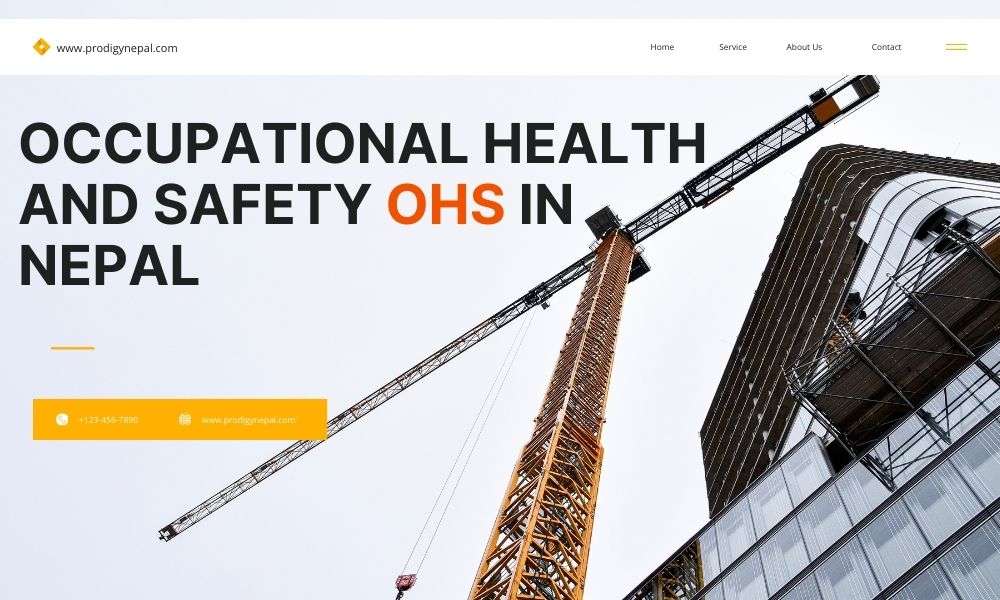This particular article introduces the occupational health and safety basics and then provides the guidelines for enhancing the quality of work.
Let us take the situation of workers from all around the globe into account, despite the vast differences in their physical, social, economic, and political environments, they all seem to face similar kinds of workplace hazards.
Thus, the safety of a workplace is an essential component of efficiency and productivity in such sectors. In a working environment, one must be able to ensure that the workers have been provided with the required safety equipment.
Occupational safety and health are the key issues today with the growing industrialization and labor market. To introduce and maintain a high standard of safety and health at the workplace, it is essential to have an overall picture of the present workplace scenario, different hazards and probable health effects.
Various articles that deal with different forms of work, like agriculture, health services, child labor, small-scale household industries, brick kilns, and textile factories were found and taken references of. The overall status of occupational safety and health does not look satisfactory. Standard work situations and criteria have to be set up and regular monitoring should be done to ensure the maintenance of quality at work.
Introduction to Occupational Health and Safety

No workplace is free from risk but the potential risks and hazards can be minimized through necessary control interventions which not only protect workers from disease and accident but also limit the damage to the environment related to industrialization. The theory related to the health and safety of workers is widely known as occupational health and safety.
Although various institutions and individuals have defined OHS differently, all of them agreed on the same meaning is that protecting and promoting the health and well-being of the workers as well as protecting the general environment through preventive actions in the workplace.
Occupational Safety and Health is the science of anticipation, recognition, evaluation and control of hazards arising in or from the workplace which could impair the health and well-being of workers, and also impacts the surrounding communities and the environment (Joshi, Shrestha, & Vaidya, 2011). It is a cross-disciplinary area concerned with the safety, health and welfare of the people at their workplace.
Though the International Labor Organization (ILO) has already set a system of international labor standards aiming at promoting opportunities for decent and productive work, in conditions of freedom, equity, security and dignity, it is relatively new and only very few industries are seemed to have maintained such standards.
In the present context, the economy of Nepal is still characterized by dominant agricultural and industrial sectors. The Industrial sector is not gaining any momentum despite various efforts from the past.
The position of the service sector, construction, and transportation is progressively increasing even though the role of the industrial sector is not satisfactory. In addition to the manufacturing sector, hotel and tourism, garbage cleaning, transportation and construction are the most important source of nonfarm employment for the workers.
Industrial development is undoubtedly the foundation of sustainable economic development as well as a self-dependent economy but is often found to have more risk of occupational hazards than other sectors. It is very likely for industrial occupations to create unsafe work and work environments because of the inherent sources of hazards in materials, processes, technologies or products.
These sources of hazard may contain risk of occurring diseases and happening accidents to the employees within the industrial premises and the general public as well as to the general environment. Safe and hazard free work and work place are needed for higher productivity, efficiency and quality of any industrial process (Gautam & Prasain, 2005).
Concept of OHS in Nepal
The concept of occupational safety and health in Nepal is in its initial stage. Despite various efforts, much still remain to be done to establish sound OSH systems in the world of work. It has not been a hot agenda in industrial field where only about 7 percent of the labor force is involved (Central Bureau of Statistics, 1998/99) where this provision is insignificant in other sectors other than industry.
The high illiteracy among the workers, lack of awareness, poor performance or inattention of the concerned government authorities in implementation of OSH related policies and activities have shadowed these issues.
All types of hazards can be prevented or minimized through adequate hazard control interventions which not only protect workers from disease and accident but also limit the damage to the environment. Since occupational diseases, accidents and injuries occur at the individual workplace, preventive and control measures within the enterprise should plan and initiate jointly by the employer, manager and workers.
Therefore, establishing a safe and sound work place environment in any establishment based on the ergonomic principle is an important aspect to increase productivity. Sound health and healthy working conditions are the prerequisites to promote development of society at all levels by increasing workers’ overall quality of life (Joshi & Dahal, 2009).
This is a review which summarizes all the research articles on occupational health and safety in Nepal. The paper is based on both primary and the secondary information sources and are obtained from the web site of Department of Labor along with the articles and reports. Likewise, various books, research reports were also consulted while writhing this paper.
Similarly, Google Scholar was used to search for relevant articles using the terms “Occupation, Safety, Health and Nepal”. Desk study has been conducted to gather information from various sources and the issues regarding the Occupational Health and Safety were discussed.
This includes reports and project documents at various industrial sectors of Nepal. Information regarding occupational health and safety status have been obtained from literatures and further studied from the reports and various management documents.
The information was also reviewed from the existing documents, books, reviews, reports, policies, regulations, and standards were taken into account for the review. In general, for this research paper, the desk review had been modified upon documents obtained from different sources and has been completed to this end.
Current Situation of OHS in Nepal
The concept of Occupational Health and Safety of the workers or labors is a new concept even to the oldest industries of Nepal. Government of Nepal has enforced the concepts of OHS through its Labor Act 1992 which has highlighted a few issues and provisions on working hours, physical infrastructural setup, yearly medical examination, and provisions of safety measures in work etc.
However, the traditional provisions and approaches have not been able to avoid the problems in works and workplaces in different sectors in Nepal.
Occupational accidents and diseases not only cause great pain, suffering or death to victims, their family members and dependents but also threaten the lives of co-workers. The victims and his/her family suffer from social problems along with economic troubles.
No single workplace is free from accident though the type and rate of accident varies greatly by sector of employment, the nature of work and workplace environment. The rate of accident also differs by the nature of production, management efficiency and accountability, awareness of the workers, etc.
The lack of coordinated efforts has led to serious occupational hazards. The most common hazards in the Nepali industrial workplace are accidents, mechanical and chemical hazards and psychological hazards. The task of maintaining a safe and healthy work environment is not an easy alley to trespass. All the stakeholders should be informed and educated on occupational grounds for an effective occupational response through their meaningful participation. It is understandable that no system is perfect and there is always room for improvement.
However, the statement should not be held as an excuse for not having a robust OHS policy in place, especially when the well-being of our own national workforce is at stake. The government should develop evidence-based legislation, policy, framework, and programs on occupational safety and health.
Also Read: Exploring the Best Sekuwa in Kathmandu
Conclusion
The issue concerning occupational safety and health is in the infant stage. It is estimated that each year approximately 20,000 workers suffer from accidents at a workplace which lead to about 200 lives lost in Nepal (Central Bureau of Statistics, 2020). The inspection, record and monitoring of OSH-related activities and the policy formulation and implementation are very poor in the industrial sector where the informal sector is not covered by the provision.
Therefore, sufficient research, development and recording of OSH issues and their proper management is the current need of the country for establishing safe, environment friendly and hazard-free work and workplace in order to increase labor productivity, efficiency and overall development of the country.
The major obstacle to instilling the concept of OSH in Nepal lies inability of stakeholders to grasp the utility and importance of OSH. Occupational safety and health procedures require adequate surveillance of the work environment and risk assessment both of which are missing completely for most enterprises in Nepal even in those claimed international standards by themselves.
Industrial enterprises have failed to develop the infrastructure necessary for effective implementation of OSH and no effort has been made from the side of establishment to provide education and training on the issue to its workers (where women workers suffer much) and managers.
It is noteworthy that initiatives to deliver OSH have remained limited and replication practice is almost nil. At the same time inadequate legal system, poor implementation and resource constraints are also the major constraints to the effectiveness. It is not possible to develop the workplace safe and healthy without the strong commitment and coordination of all the stakeholders.
Recommendations on OHS in Nepal
The task of providing OSH and maintaining a safe and healthy work environment is not as easy as it seems. It requires the sincere effort of all stakeholders. Workers need to be empowered to advocate for improved working conditions. They should be informed and educated on occupational grounds for an effective occupational response through their meaningful participation.
Workers should also be informed of their rights concerning their working conditions. It is also necessary to make them understand what OSH is and the investment that is likely to result in motivation, job satisfaction, a good ambience and increased responsibility on the job.
Specifically, based on the discussion with the trade union activists, employers, health personnel and related government authorities the OSH situation in the workplace can be improved by adopting the following recommendations.
- A detailed national-level study covering more sectors, establishments and geographical areas is needed to find out the real situation of the basic workplaces.
- It is necessary to develop effective inspection mechanisms by following an official process involving all the stakeholders and experts and supervising the establishments regularly.
- Government has to make mandatory provisions for the formation of Joint Security Committees in order to minimize the health hazards in all workplaces with effective mobilization.
- There should be strong cooperation between employers and trade unions to ensure good OSH performance.
- Government agencies should be encouraged to develop a special national framework, policy and programs for occupational health, including actions for providing OSH for all people at work



